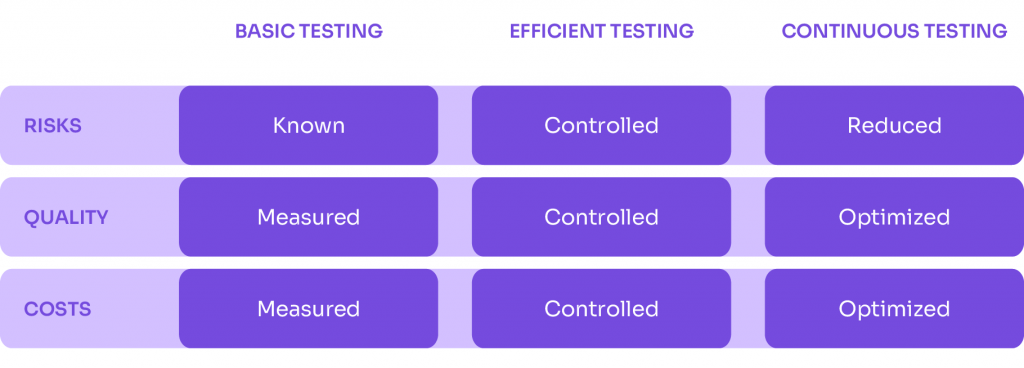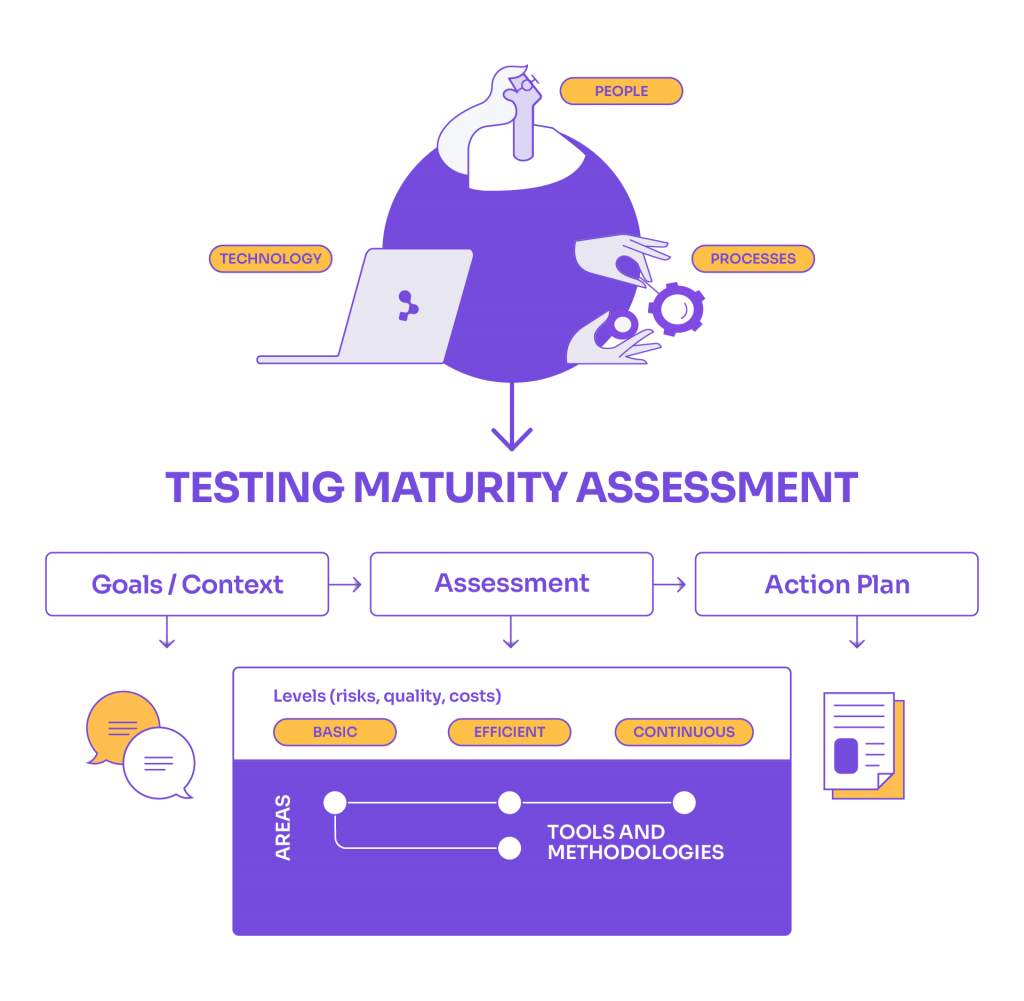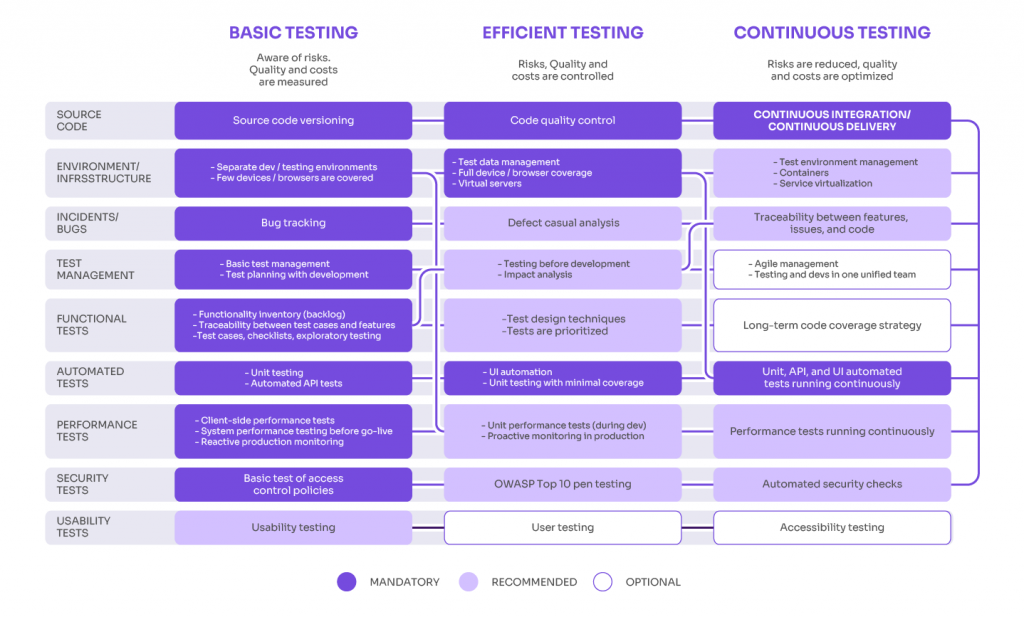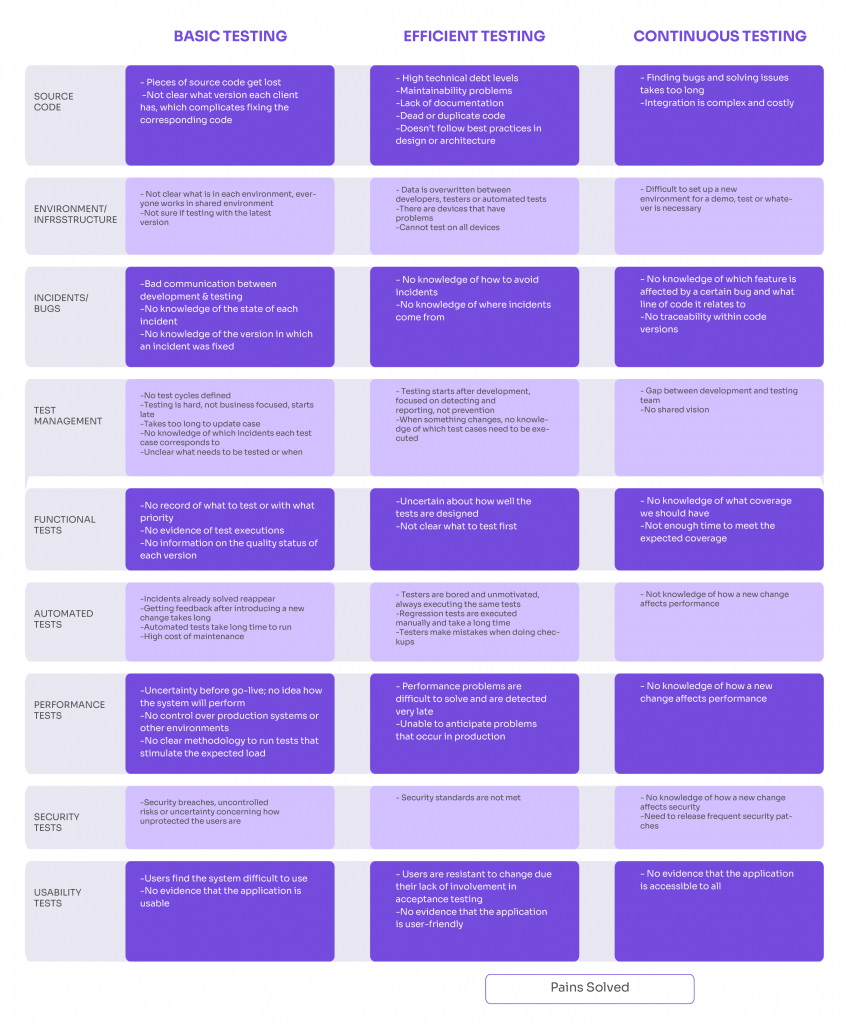A guide to assess the testing effectiveness of your test strategies and see how you can take it to the next level, as part of your software testing process.


Does your development team feel stuck when it comes to knowing what specific things to focus on over different stages testing phases of the software development life cycle? Do you aim to improve your software, and achieve test process improvement, and quality management? Need to figure out how to fill in the gaps and improve efficiency and results?
We’ve found it immensely valuable to periodically conduct a test maturity model assessment when working with clients. As part of our software testing process, we also use a test maturity model tmm during the early stages of a new engagement.
Our goal is to better understand where our client’s team stands in terms of their software quality goals and test processes, so as to put together a strategy to take them to the next level.
In this post, we’ll share the process behind our software testing maturity assessment so that you can bring some of these ideas to your own test strategy and develop testing further, working towards continuous improvement.
Ready to Reach The Next Level of Software Testing Maturity? Take our 9-question assessment to find out how your testing stacks up and get custom tips for your software testing strategy.
The assessment focuses on these three elements of testing: quality, risks, and costs.
In the end, we believe that mature teams are those who have mastered the practice of continuous testing, which is what we’ve designated as our highest level of testing maturity. A continuous improvement approach for your test strategy is what can help your team to succeed along with the adoption of CI/CD.
The assessment deals with how teams go about efficiently matching testing and quality control tasks with several processes throughout software development and establishing the appropriate feedback cycles for continuous improvement.
Did you know that revising and adapting your testing practices can help you minimize business risk and increase the quality of your software? We invite you to know our Testing Strategy Services.
Evaluation Overview
Firstly, we conduct the analysis considering the three main pillars of software engineering: people, technology, and processes.
Software Testing Maturity Levels
To keep things simple, we’ve defined three different levels of software testing maturity:


When performing the assessment, we follow a three-step process:
- We analyze the team’s context and objectives.
- We carry out the evaluation based on our defined maturity criteria, going over the complete quality and testing strategy,
- We arrive at an action plan that we then suggest to put in place to advance to the next level.
One of the first things to analyze, after understanding the objectives and the context, is the maturity of the team in terms of skills, communication, and other aspects that also influence the quality of the final product.
In the same way, we analyze everything related to the process, methodology, (whether the team works in agile, waterfall or a hybrid environment), etc.
Putting it all together, we see something like this:


Assessment Areas
Next, we delve into other points that are largely related to the technological and process aspects of software development, but highly focused on everything that affects quality.
For each of the areas we analyze, we define a table with three levels of maturity, for which certain preconditions should be previously met to be at each level.
This leads us directly to the action plan, because in order to advance to a higher level, it’s clear what else must be tackled first. Of course, everything is validated in context, prioritizing accordingly and weighing the benefits, costs and risks of each activity.


In the chart above, you can see a base model for the different areas we analyze, from how teams manage the source code to usability and testing processes.
Read more about how to achieve maturity in all of these areas in our Ultimate Guide to Continuous Testing!
Of all the ISO 25010 quality factors, we included only the most common ones that are relevant for most companies, but for each quality factor, we can define levels in a similar way.
For each area, we identify key activities for each level. As you can see, we define precedence between activities. For example, a team can’t claim to have continuous integration if it doesn’t first have a centralized code repository that manages artifact versions.
Associated with this analysis, the following chart shows some of the most common pain points that each level of maturity manages to eliminate or solve:


A Tool to Level Up Your Software Testing
We hope this software testing maturity model can serve as a useful reference when analyzing how to improve your testing strategy.
We’ve found it to be a helpful tool to clarify which are the most important areas to prioritize, what gaps exist in a test strategy, and how to make a plan to reduce risks and optimize quality under controlled costs.
Curious as to which level your team lands for the different areas of quality? So don’t forget to take our free, online software testing maturity assessment!
Need help with your software testing strategy, testing process, and quality control?
We are quality partners! Check our solutions and boost your test process improvement!
Discover our software testing case studies that show how we’ve helped top brands achieve their business and software development goals.
Contact us to discuss how we can help you grow your business.




Federico Toledo
Related Posts
Abstracta Turns 12!
Federico shares his reflections on what Abstracta means to him and all of us Today Abstracta celebrates 12 years, (a fitting topic to mark our 200th blog post)! That is, 12 years since the moment in which Matias Reina, Fabian Baptista and I took a…
Quality Sense Podcast: Rob Sabourin – Testing Under Pressure (Part 2)
Learn about the 5 principles of Rob Sabourin’s Just-in-Time Testing methodology to help test under pressure Listen to this episode of the Quality Sense Podcast in which Federico Toledo continues his two-part interview with Robert Sabourin, Adjunct Professor of Software Engineering at McGill University and…
2 Comments
Comments are closed.
Search
Contents









Thanks for the information
thanks for sharing blog on software testing strategy it was a good blog keep it up